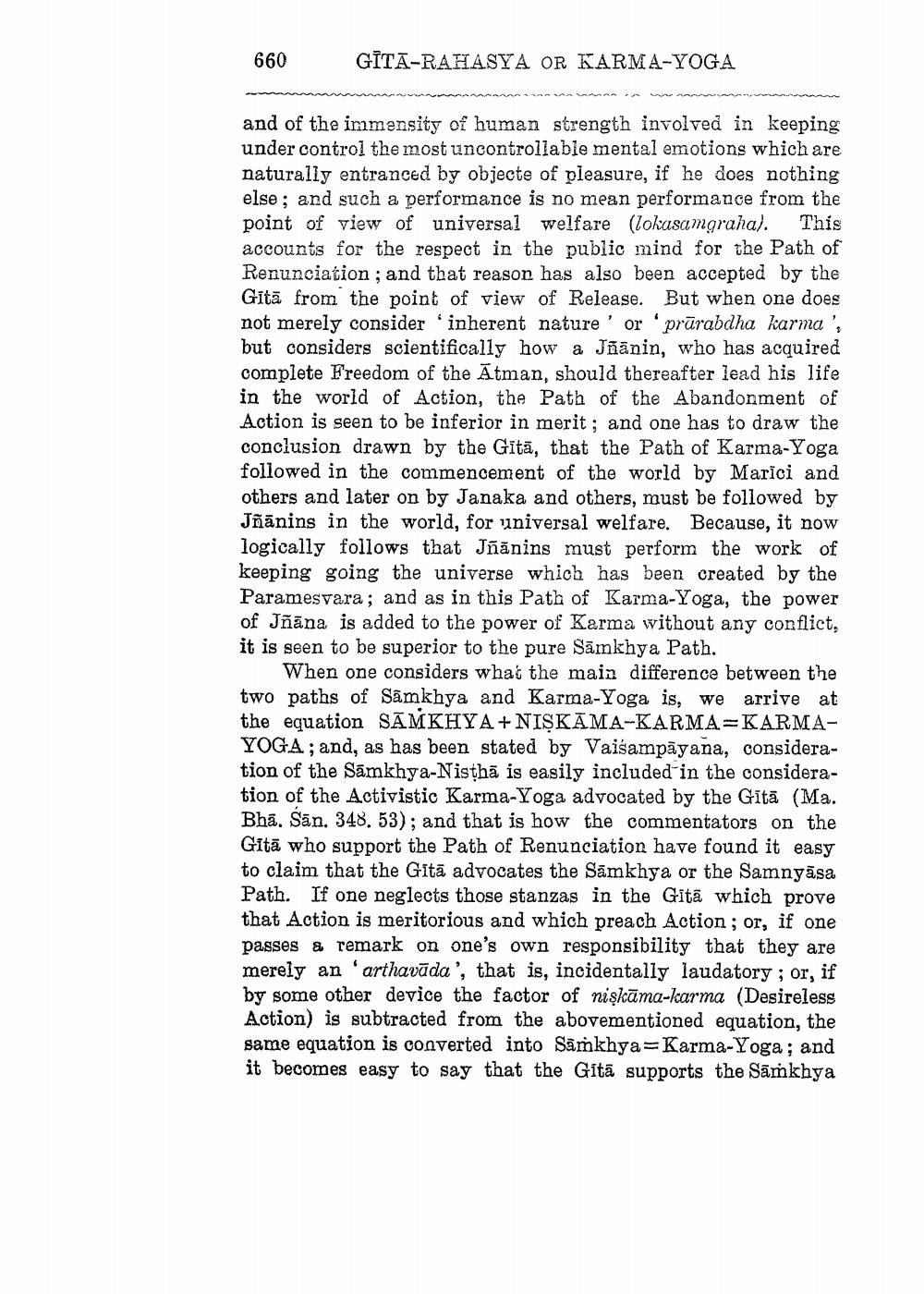________________
660
GĪTA-RAHASYA OR KARMA-YOGA
and of the immensity of human strength involved in keeping under control the most uncontrollable mental emotions which are naturally entranced by objecte of pleasure, if he does nothing else; and such a performance is no mean performance from the point of view of universal welfare (lokasamgraha). This accounts for the respect in the public mind for the Path of Renunciation; and that reason has also been accepted by the Gītā from the point of view of Release. But when one does not merely consider inherent nature' or 'prārabdha karma', but considers scientifically how a Jñānin, who has acquired complete Freedom of the Atman, should thereafter lead his life in the world of Action, the Path of the Abandonment of Action is seen to be inferior in merit; and one has to draw the conclusion drawn by the Gītā, that the Path of Karma-Yoga followed in the commencement of the world by Marici and others and later on by Janaka and others, must be followed by Jñānins in the world, for universal welfare. Because, it now logically follows that Jñānins must perform the work of keeping going the universe which has been created by the Paramesvara; and as in this path of Karma-Yoga, the power of Jñāna is added to the power of Karma without any conflict, it is seen to be superior to the pure Sāmkhya Path.
When one considers what the main difference between the two paths of Samkhya and Karma-Yoga is, we arrive at the equation SAMKHYA+NISKĀMA-KARMA=KARMAYOGA; and, as has been stated by Vaišampāyana, consideration of the Samkhya-Nisthā is easily included in the consideration of the Activistic Karma-Yoga advocated by the Gītā (Ma. Bha. Sān. 348. 53); and that is how the commentators on the Gitā who support the Path of Renunciation have found it easy to claim that the Gitā advocates the Sāmkhya or the Samnyāsa Path. If one neglects those stanzas in the Gītā which prove that Action is meritorious and which preach Action; or, if one passes & remark on one's own responsibility that they are merely an 'arthavāda', that is, incidentally laudatory ; or, if by some other device the factor of niskāma-karma (Desireless Action) is subtracted from the abovementioned equation, the same equation is converted into Samkhya=Karma-Yoga; and it becomes easy to say that the Gíta supports the Sāṁkhya




